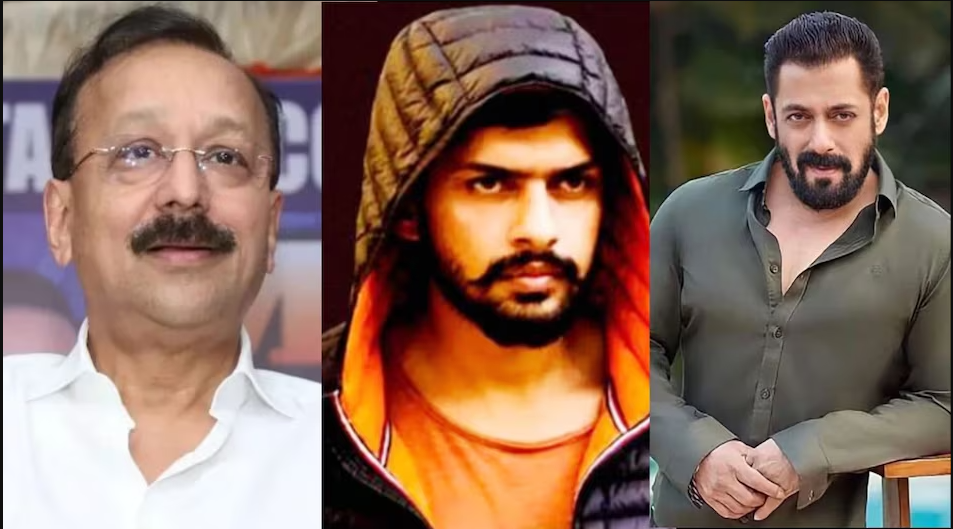
Ahobilam is located in Nallamala hill forests in the Allagadda Mandal of Kurnool district of Andhra Pradesh. It lies in the hills of the Eastern Ghats. Ahobilam is the place where Lord appears in his fierce form, called Ugra Narasimha, who is ‘Svayambhu’ – self-manifest. Entire holy site – Ahobilam is the avatar of the ferocious self-emerged Lord Narasimha. The temple consists of nine shrines dedicated to Lord Nrisimha located in a 5 KM circle with the main temple being the ‘Ahobila Narasimha Swamy’ holy shrine. Let’s discover more about this extensively powerful and extremely holy avatar place of the absolute Lord Narasimha himself!
You must know the History!
The demon king Hiranyakashyapu who was a Lord Vishnu hater turned extremely troublesome to his own son ‘Prahllada’. As Prahallada was a staunch devotee of Lord Vishnu and felt his presence everywhere he tried to kill his son in various ways such as throwing him in the sea, pushing him from the hilltop, tying him in a room full of snakes, leaving him stamped by a drugged elephant, etc. But Lord Vishnu saved him every time.
Once Prahallada advises and challenges his father regarding Lord Vishnu’s existence everywhere across the infinite universe, in every smallest particle of all living and nonliving things. Hearing this Hiranyakashipu points out to a lifeless pillar and asks his son if his Lord Vishnu is inside this dummy pillar. Prahllad says, yes he surely is. Hiranyakashipu then says if so I will kick this pillar and let me see if your Vishnu actually comes out or no. Also says to Prahllad that in case your Lord does not come out I will kill you by chopping off your head.
The calm and composed Prahllad as usual starts praying to the Lord. It was then the epic moment where the supreme God with rambunctious sound, tremendous aggravation, and barbarous exasperation bulldozes the pillar into pieces sounding like vociferous thundering and takes the avatar of man and lion and tears to open Hiranyakashipu with his lion nails and kills him. Lord Narashimha owns a human torso and lower body, with a lion head, face and claws absolutely terrorizing.
This very place where Lord Narasimha saved Prahllada and killed Hiranyakashipu is Ahobalim. And this very temple is the ‘Ahobila Narasimha Swamy Temple’ which is natural, the self-emerged idol of Lord Narasimha himself.

Ahobilam is on Garudachalam!
Garuda wished for a vision of Lord Nrisimha in the form of his actual Avathara. Garuda performed server tapas and silent penance for the same. To fulfill his wish, the Lord settled in the hills around Ahobilam in the midst of dense forests in nine different forms. For this reason, this hill came to be known as Garudadri, Garudachalam, and Garudasailam.
According to Sthala Purana, there are two popular legends for the derivation of the word ‘Ahobilam’ to this holy place!
It is stated that the Gods and Goddesses while witnessed the terrific aspect ‘Ugra Kala’ roopa of Lord Narasimha tearing Hiranyakasipu into pieces. They sang in praise of the Lord as ‘Ahobala’ (Aho- mighty, Bala – strength) meaning ‘The ultimate Strength, which did not exist before nor can exist in the future’. Hence the site derived the name ‘Ahobilam’ and also the place is referred to as ‘Ahobala’ as well.
The other version is that of the wonderful cave ‘Ahobila’, (Aho -wonderful, Bila – cave) which was where Garuda worshipped, performed penance and visualized the Lord, praying Lord Narasimha to remain there which would turn helpful to the beings. Hence the place itself came to be known as ‘Ahobilam’.

How is Ahobilam?
The town is divided into two parts, Lower Ahobilam or ‘Diguva Ahobilam’ and Upper Ahobilam or ‘Eguva Ahobilam’. Of the nine Lord Narasimha shrines, three are situated in Lower Ahobilam and the remaining six shrines are located in Upper Ahobilam. There is also another temple of Lord Narasimha Swami in the Lower Ahobilam where the idol of the Lord is believed to be installed by Lord Venkateshwara of Tirupati.
It is said that the entire Nallamala Hills from Kurnool to Chittoor is a personification of Lord Adishesha himself whose tail end is Srisailam, whose middle is Ahobilam and whose head is Tirupathi. Precisely the Hills in the Eastern Ghats is compared to Sri Adi Shesha, the great serpent bed of Lord Vishnu. Tirupati lies on its seven hoods, Ahobilam on its central part or stomach and Srisailam on its tail.
Nava Temples for Nava Narasimha Avataras!
Situated amidst dense Nallamala Forest, Ahobilam is one of the 108 Divya Desams. This place is also called as Nava Narasimha Kshetra since Lord Narasimha is worshipped in 9 different forms and separate temples exist for all the forms within a radius of 5 km from the main temple. Few of these temples have easy access, but most of them have to be reached by difficult treks through thick forest and rocky paths. The nine shrines are as below
(1) BHARGAVA NARASIMHA SWAMY
This temple is located in the Lower Ahobilam, on a hill, near the sacred pond, known as ‘Bhargava Theertham’, where Bhargava Rama performed his penance. Hence the Lord of the temple is known as Bhargava Narasimha Swamy.

(2) YOGANANDA NARASIMHA SWAMY
This temple is to the south-east of Lower Ahobilam. The popular legend is that after killing Hiranyakasipu, Lord Narasimha taught Prahlada several yogic postures. Therefore, the Lord in this aspect is called Yogananda Narasimha.

(3) CHATRAVATA NARASIMHA SWAMY
This temple is located in the Lower Ahobilam and the image of the deity is installed under a peepal tree, surrounded by thorny bushes. Hence, the Lord is called Chatravata Narasimha Swamy.

(4) AHOBILA NARASIMHA SWAMY
This temple is situated in the Upper Ahobilam. This is the main temple and the earliest of all the nine temples there. The Lord here appears in his self-emerged fierceful form, called Ugra Narasimha and hence is known as Ahobila Nrisimha Swamy.

(5) KRODAKARA (VARAHA) NARASIMHA SWAMY
This temple is in Upper Ahobilam. The image of the deity has the face of a boar (varaha or kroda) and the Lord is seen along with his consort, Lakshmi. Hence the Lord of the temple is known as Krodakara (Varaha) Narasimha Swamy. It is said that if one does Narayana Satakshari Japa of Varahakanda at this place, one would be blessed with immense spiritual consciousness.

(6) KARANJA NARASIMHA SWAMY
This temple is in Upper Ahobilam and one furlong from the road leading to Lower Ahobilam. The image of the deity is installed under a tree, called ‘Karanja Vruksham’. Hence this Lord is called Karanja Narasimha Swamy.

(7) MALOLA NARASIMHA SWAMY
This temple is in Upper Ahobilam and extremely famous. The deity here appears in ‘soumya/shanta’ swaroopa (graceful) form. As Lord Narasimha is seen with his consort, Lakshmi, He is known as Malola Narasimha Swamy. The word ‘Malola’ means beloved to Lakshmi (Ma=Lakshmi, Lola= beloved). The Kakatiya King Prataparudra has donated the Utsava deity made of gold which is under worship by the Ahobilam Jeeyars.

(8) JWALA NARASIMHA SWAMY
This temple is in Upper Ahobilam on a hill called, ‘Achalachaya Meru’. This place is said to be the actual spot, where the fierce anger of the Lord reached its culmination when he tore Hiranyakasipu.

(9) PAVANA NARASIMHA SWAMY
This temple is in Upper Ahobilam on the banks of the River ‘Pavana’. Hence the Lord of the shrine is known as Pavana Narasimha Swamy.

In addition to the shrines mentioned above, there are three other main, extremely holy sanctums dedicated to Lord Narasimha Swamy!
Holy Ahobilam Tirthams!
Rakthakundam
It is said that Lord Narasimha after killing the demon washed his glory hands at this Tirtham and hence, the water is still red in appearance even today.
Lanjakoneru
It is said that once upon a time, a courtesan, on having the mere darshan of the Lord repented of her ways and built the Tirtham to wash off her sins. And the one who takes a dip here is said to be freed of all sins as well.

It is said that you only reach the Ahobilam temple with special blessings of Lord Narasimha!
Actually, the path to the main Ahobila Narasimha Swamy is extremely adventurous with highly difficult trekking path which involves crossing deep caves, dense forests and climbing n number of steps. Localities say only with Lord’s own blessings one could reach the main temple which is on the extreme hilltop. And that are also chances of one being attacked by the wild beasts in the dense forests all along the way. Accordingly, they say, all devotees who come seeking darshan of the Lord are hence prevented from such dangers and protected by Lord Narasimha himself.

Ahobilam Brahmotsavam!
The Annual Brahmotsavam festival which commences from Palguna shuddha panchami to poornima and especially ‘Narasimha Jayanthi’ is a lavish extravaganza in itself. Ahobilam also hosts many grandeur festivals like ‘Parveta festival’ the tour of 33 surrounding villages for 40 days on MakarSankranti, the 30-day festival, Kalyanotsavam’s in Dhanurmasam and many more.

Make sure you certainly visit this once in a lifetime and be a part of Lord Narasimha’s special blessings.






















